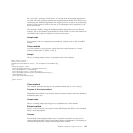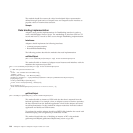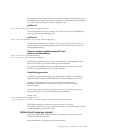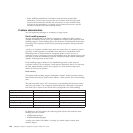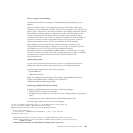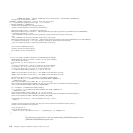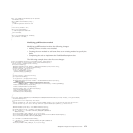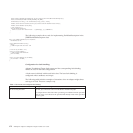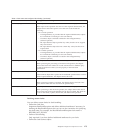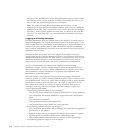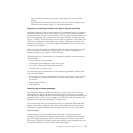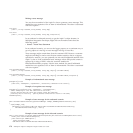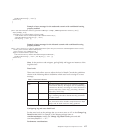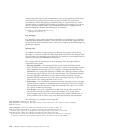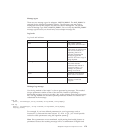
Table 4. Fault name and configured fault binding (continued)
Fault Name Configured Fault Binding
INVALID_REQUEST com.ibm.j2ca.extension.emd.runtime.WBIFaultDataBindingImpl
When input to the operation does not have the required characteristics, the
adapter throws this fault. Specific errors that can result include the
following:
v For a Create operation:
– A ChangeSummary is provided but the required child business objects
are not marked as created (per strict conventions)
– A business object is marked as deleted in the ChangeSummary
(assertion optional)
– The input business object specifies key values, but the server supports
only auto-creation
– The input business object does not contain key values, but the server
requires them
v For a Delete operation:
– A ChangeSummary is provided but the required child business objects
are not marked as deleted (per strict conventions)
– A business object is marked as created in the ChangeSummary
(assertion optional)
MATCHES_EXCEEDED_LIMIT com.ibm.j2ca.extension.emd.runtime.MatchingFaultDataBinding
When processing the processing of an RetrieveAll operation, the adapter
throws this fault if the number of records returned from a database query
exceed the maximum number of records property in the interaction
specification.
MISSING_DATA com.ibm.j2ca.extension.emd.runtime.WBIFaultDataBindingImpl
If the business object that is passed to the outbound operation does not have
all the required attributes, the adapter throws this fault.
MULTIPLE_MATCHING_RECORDS com.ibm.j2ca.extension.emd.runtime.MatchingFaultDataBinding
When processing a Retrieve operation, the adapter throws this fault if the
query returns more than one record for the specified keys.
RECORD_NOT_FOUND com.ibm.j2ca.extension.emd.runtime.WBIFaultDataBindingImpl
When processing a data retrieval operation, the adapter throws this fault if
the record is not found in the database for the keys specified. This fault can
occur for the Delete, Update, RetrieveAll, and RetrieveAll operations.
Defining custom faults:
You can define custom faults for fault handling.
v Define the fault class
Implement BaseFaultException and define additional attributes if necessary. In
defining the BaseFaultException class you can see the convention for specifying
the fault name. For example, the RecordNotFoundException fault name is
RECORD_NOT_FOUND.
v Define a fault binding
Only required if you have defined additional attributes for your fault.
v Define the fault business object
WebSphere Adapter development overview 173



